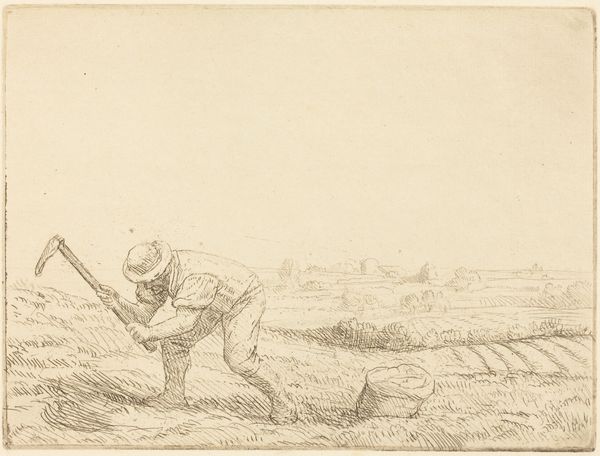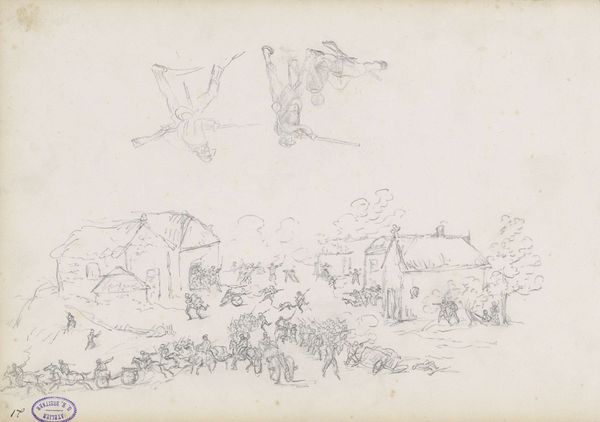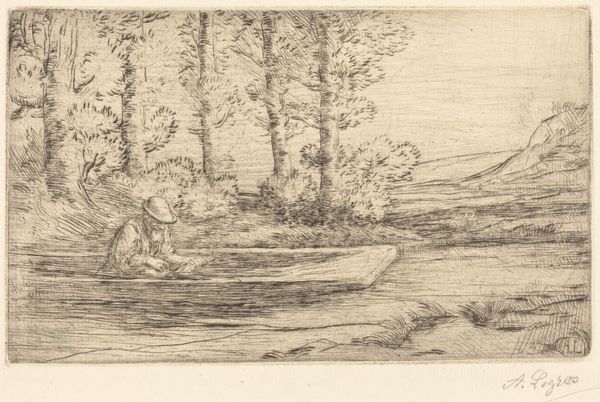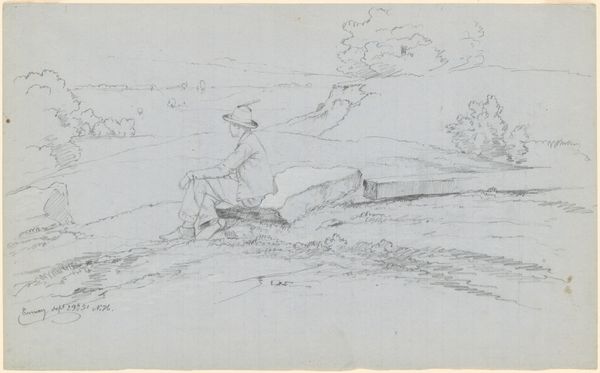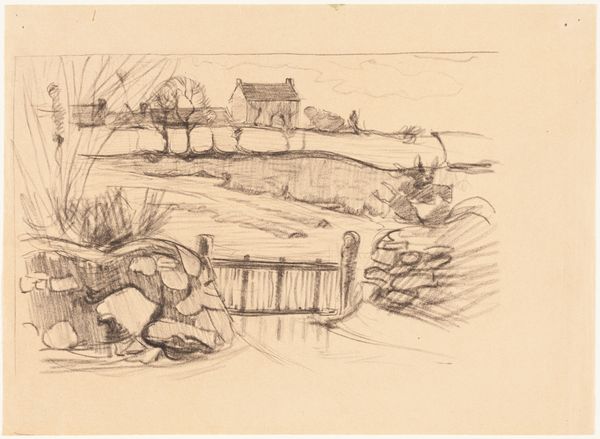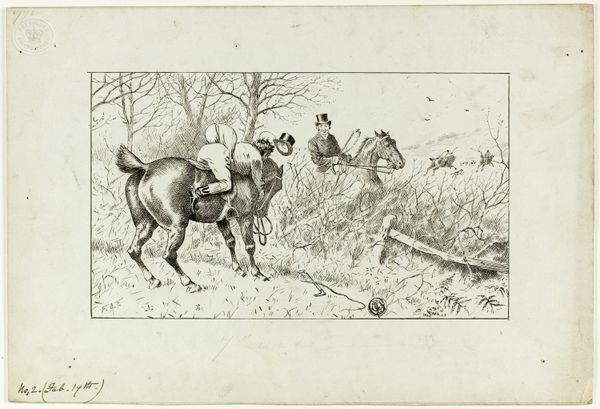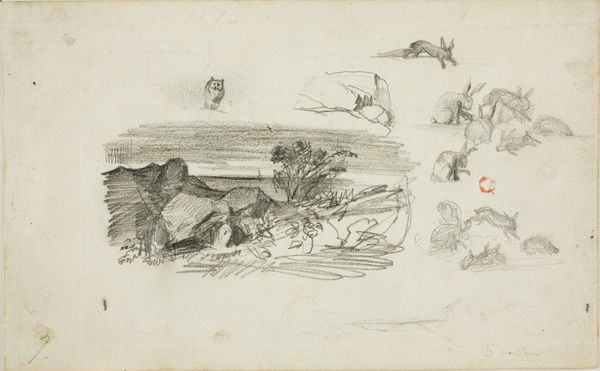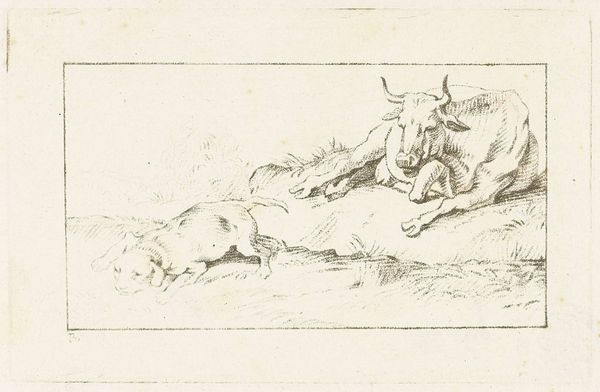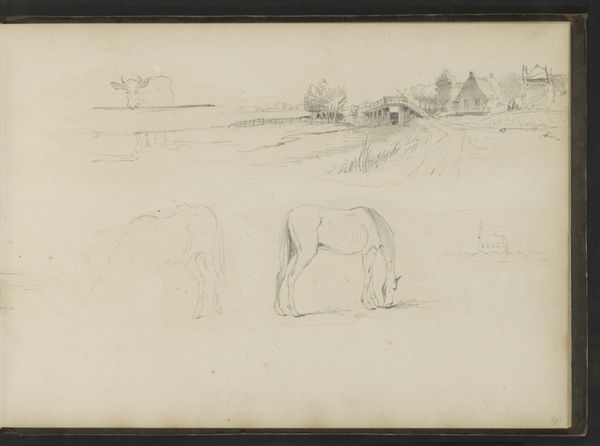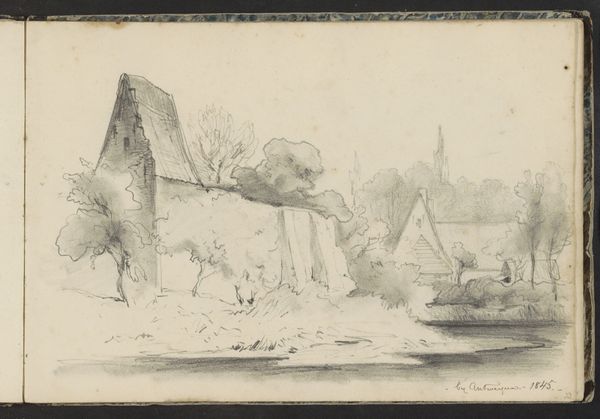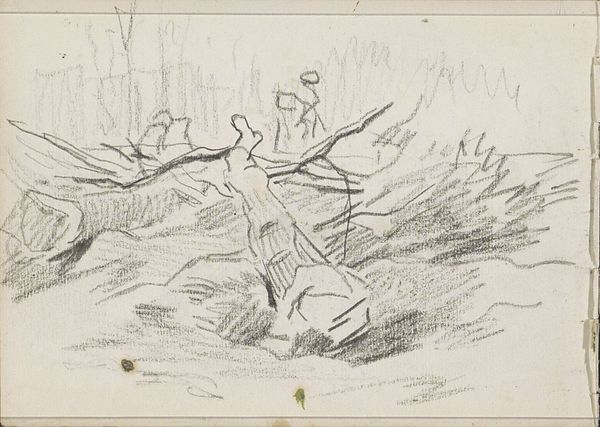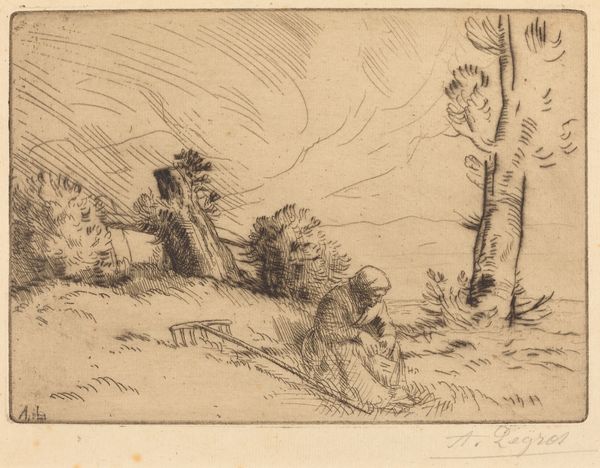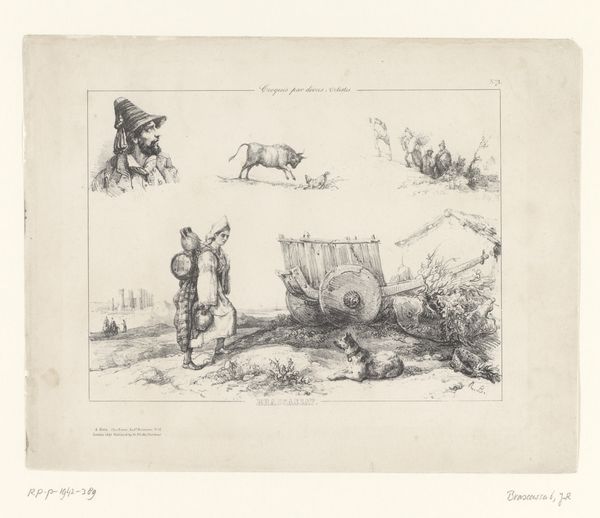
drawing, print, etching
#
drawing
# print
#
etching
#
landscape
#
realism
Copyright: National Gallery of Art: CC0 1.0
Curator: This is Alphonse Legros’ etching, "Woodcutter," or "Le Bucheron." Editor: It has a bleak, almost mournful feeling to it. The figure is positioned dramatically with an axe over his head and gives a sense of labor. It feels weighty, not only for the woodcutter but also for the trees he's working on. Curator: Well, etching as a medium allowed Legros to achieve such a sense of weight. Note how the dense cross-hatching models the woodcutter’s straining figure as well as the bulk and texture of the felled trees. These lines denote not only form but also physical effort. Editor: Precisely! The figure of the woodcutter, isolated and engaged in labor, brings to mind questions of class and the experience of the working class within nineteenth-century European society. Curator: And consider that Legros taught etching at the Slade School of Fine Art. So this work wasn't created in a vacuum. This image, its various states, would have served an important didactic function for students who may not have come from such backgrounds, informing how they depict mass labor and material realities. Editor: It really underlines how art becomes intertwined with economic structures, and it makes us question who owns the means of production and whose stories get represented through art. This prompts a discussion about who gets to benefit from this work—who gets to enjoy the art versus who does the manual labor involved. Curator: I see that clearly with you, how the artist engages in making the art, how he uses this process to create an atmosphere that affects not just what is depicted but how that is depicted, especially in relation to this character's material existence and environment. Editor: It's precisely how Legros positions the woodcutter that stirs debate over artistic portrayals of marginalized communities and socio-economic critique. Curator: I’m fascinated with its value as an etching, showcasing this artistic choice that enables its distribution and how his academic setting might shape his and his students’ views. Editor: Indeed. The artwork opens pathways into broader discussions on art and social consciousness, on labour, on landscape, inviting ongoing dialogue concerning our cultural values and their visual representations.
Comments
No comments
Be the first to comment and join the conversation on the ultimate creative platform.
